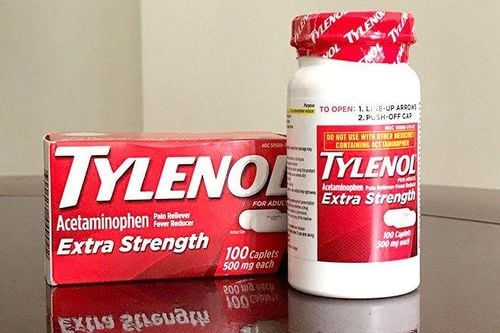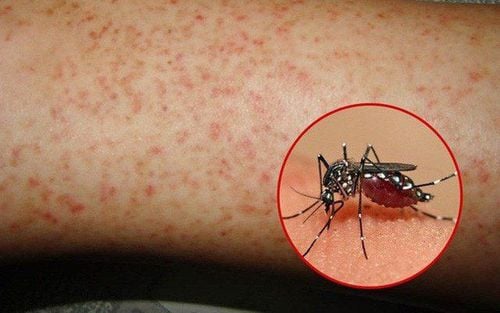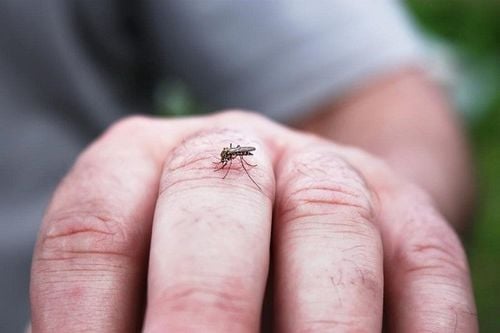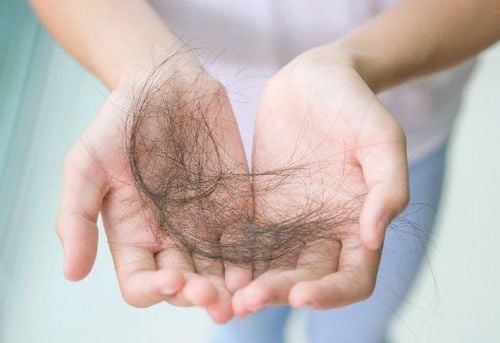This is an automatically translated article.
The article was professionally consulted by Specialist Doctor II Le Thanh Cam - Department of Pediatrics - Neonatology - Vinmec Danang International General Hospital.Dengue fever is an infectious disease caused by the Dengue virus. This is a dangerous disease, especially dengue fever in young children, which is classified by the World Health Organization (WHO) as a group of dangerous infectious diseases that need attention.
1. The stages of dengue fever
The Aedes aegypti mosquito, also known as the midges mosquito, is considered to be an vector of disease.
Dengue fever in children will go through 3 stages:
1.1 Phase 1
At this stage, the manifestations of dengue fever are usually non-specific, often children only have high fever, muscle aches, irritability, etc. Therefore, it is difficult to distinguish dengue fever at this stage from infection. other common viruses.
1.2 Stage 2
This stage is a dangerous stage, where complications of the disease can appear and can affect the life of the child.
In addition to fever, the disease also has symptoms of bleeding under the skin (on the front of the legs, the inside of the arms, abdomen, thighs), nosebleeds, bleeding gums. Serious complications can occur such as internal bleeding, gastrointestinal bleeding or brain hemorrhage. At this stage, young children need to be treated and closely monitored.
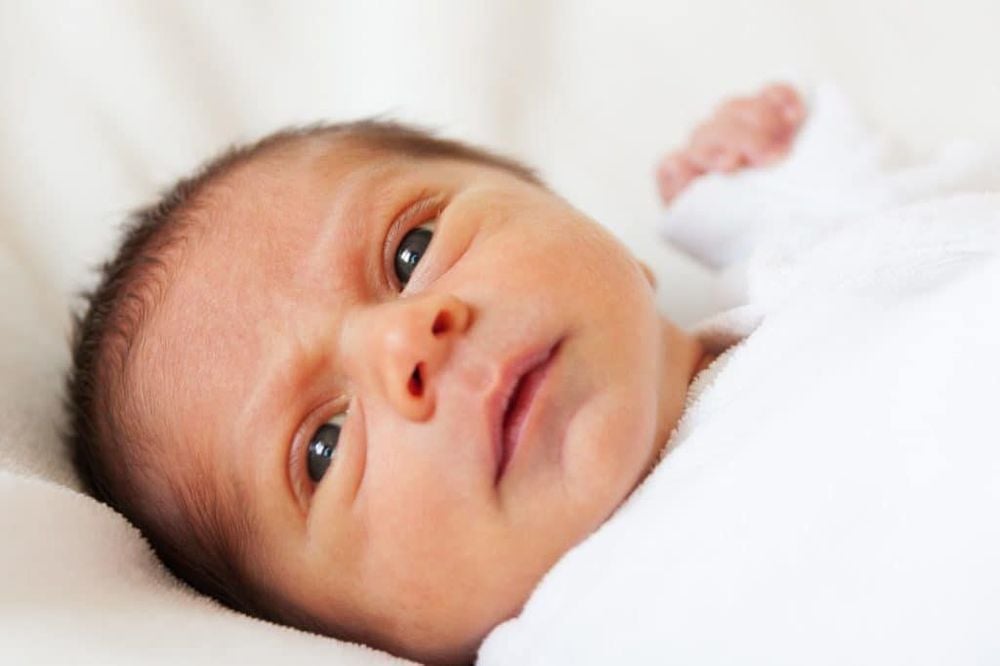
Sốt xuất huyết có thể gây xuất huyết não ở trẻ
1.3 Stage 3
After passing the critical stage, the child enters the recovery phase. Children will have a fever, their physical condition will begin to improve, their appetite will be increased, they urinate more often, and their blood tests will return to normal.
Can I take a bath if I have dengue fever?
2. Manifestations of dengue fever in young children
2.1 Manifestations of mild dengue fever
Sudden high fever 39-40 degrees Celsius, lasting 2-7 days, poor response to antipyretic drugs. Headache, muscle pain, pain in 2 eye sockets. The skin may become red and swollen.
2.2 Manifestations of severe hemorrhagic fever
Dengue fever in children with severe disease, in addition to the above symptoms, is often accompanied by the following symptoms:
Signs of hemorrhage: Spots on the skin, nosebleeds, bleeding gums, bruises on the spot. injection, vomiting blood or passing black stools (due to gastrointestinal bleeding). Abdominal pain, nausea, cold limbs, fatigue, panic (shock syndrome), if not given emergency and timely treatment, can lead to death.
2.3 Danger signs that need to be taken to a medical facility quickly
Bleeding: It can be as light as bleeding under the skin to as heavy as gastrointestinal bleeding, internal bleeding. Vomiting continuously. Severe abdominal pain, especially liver pain. Drowsiness, disturbances of consciousness Convulsions Cyanic cyanosis, cold and wet hands and feet Respiratory failure, difficulty breathing.
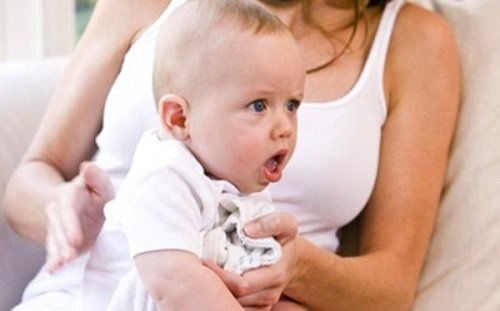
Khi trẻ có dấu hiệu suy hô hấp cần ngay lập tức đưa tới bệnh viện
3. Taking care of children with dengue fever
When detecting signs of dengue fever in young children, parents need to take the child to the nearest medical facility for accurate diagnosis and appropriate treatment. If the dengue fever is mild, the child can be treated on an outpatient basis and re-examined according to the doctor's appointment. With severe disease, children need to be hospitalized for treatment and monitoring of danger signs, prevention and treatment of life-threatening complications. Monitor temperature and other dangerous signs of illness carefully. Give children absolute rest, do not play too much. If the child's temperature is over 38.5 degrees Celsius, it is necessary to give the child a single paracetamol-based antipyretic with a dose of 10-15mg/kg of body weight combined with a cool wipe, repeated every 4-6 hours if the child is sick. still high fever. Never take aspirin or ibuprofen. Dress your baby in light clothes, avoid wrapping them in blankets too much. Give your child plenty of water to drink to make up for the loss of water due to fever, if the child can drink water mixed with oresol, the better. In addition to filtered water, children can drink more juices to supplement minerals and vitamin C such as: orange juice, lemon...

Khi trẻ bị sốt xuất huyết, cần bổ sung nhiều nước, nhất là nước cam, nước chanh cho trẻ
4. Dengue fever prevention in young children
Up to now, there is no specific treatment or vaccine for dengue fever in children. The main prevention is to eliminate the vector that transmits the disease, the Aedes aegypti mosquito, and supportive treatment to avoid dangerous complications. Some ways to prevent dengue fever in young children can be applied:
4.1 For the surroundings
Sanitize tools containing standing water in the house such as water containers, vases... Indoor water containers should be covered so that mosquitoes cannot enter and lay eggs. Clear bushes around the house, eliminating places where mosquitoes hide. Drop fish into large-capacity water containers such as tanks, wells, jars, jars, etc., so that the fish can kill the larvae and do not develop into mosquitoes. Clean the living space regularly, turn the water containers upside down if not in use. Use herbs or scented plants around the house to repel mosquitoes.
4.2 For young children
Let children wear long-sleeved clothes even during the day to limit the child's mosquito bites and increase the risk of disease. Also, limit wearing dark clothes for your baby. Sleep under the net, day or night. Use anti-mosquito products such as nebulizer spray bottles, mosquito repellent creams containing safe ingredients to protect children. For children to be healthy and develop well, it is necessary to have a nutritious diet in terms of quantity and quality balance. If children are not provided with adequate and balanced nutrients, it will lead to diseases of excess or lack of nutrients, which adversely affect the comprehensive development of children in terms of physical, mental and motor skills.
Children who do not eat properly are at risk of micro-mineral deficiency causing anorexia, growth retardation, malabsorption,... If they notice the above signs, parents should supplement their children with products. The supplement contains lysine, essential micro-minerals and vitamins such as zinc, chromium, selenium, and B vitamins to help fully meet the nutritional needs of children. At the same time, these essential vitamins also support digestion, enhance nutrient absorption, help improve anorexia, and help children eat well.
Parents can learn more:
Signs of zinc deficiency in children
Micronutrient deficiency and failure to gain weight in children
Please regularly visit Vinmec.com website and update useful information to take care of your child. Take care of the baby and the whole family.





